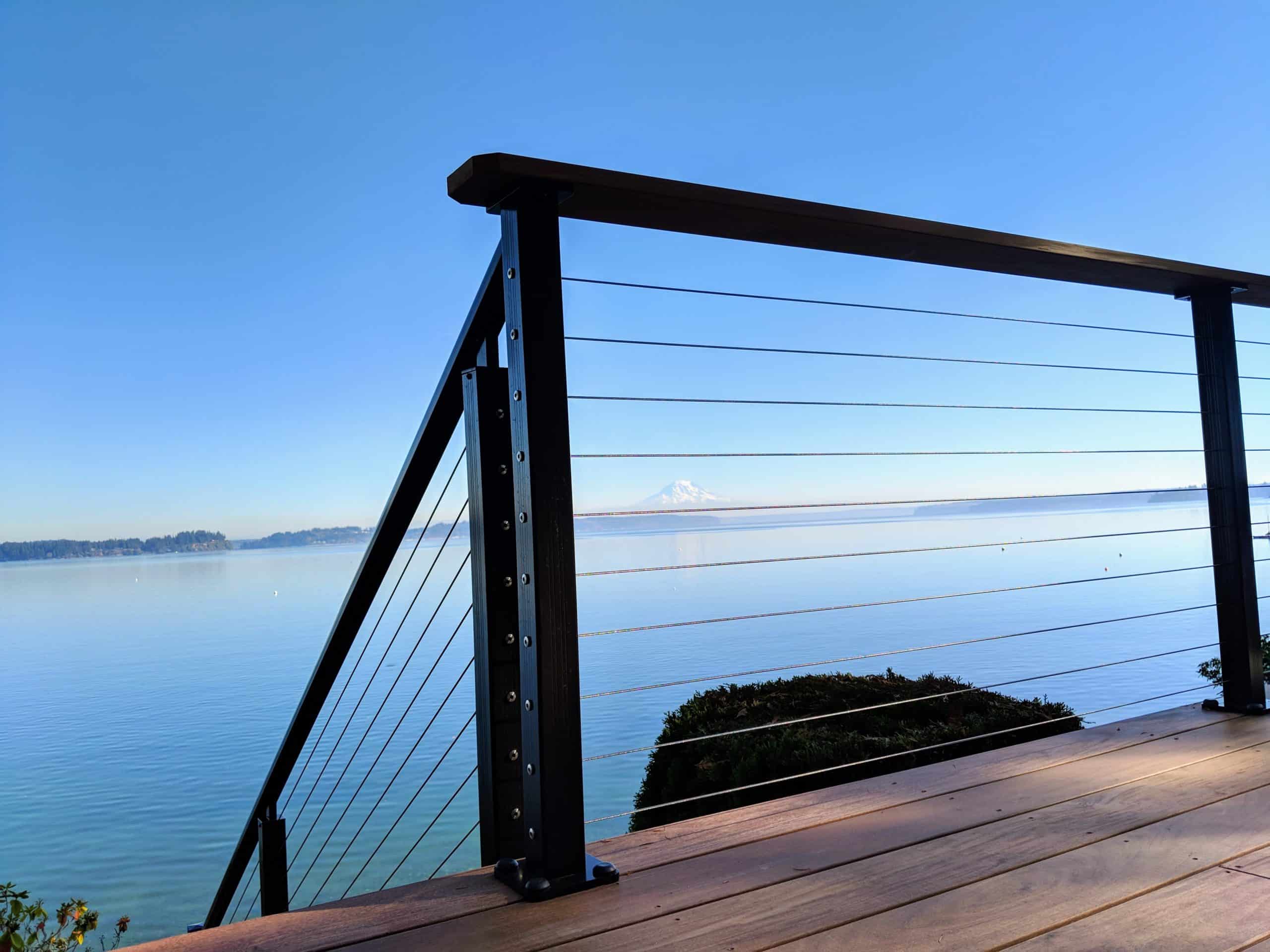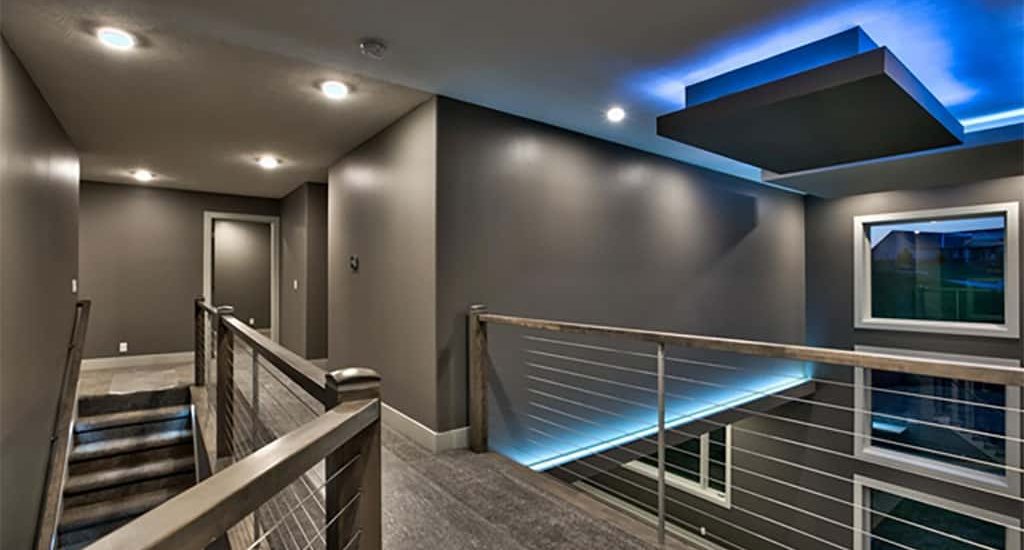At its heart, a railing is about safety. Whether indoors or outdoors, railings are there to protect you, your family and friends from an elevation. Every railing installed both inside and outside your home has to meet rigorous building code standards to ensure your safety. These requirements can include:
- Railing height
- Post Spacing
- Materials
- Fasteners
When you think about it, railings can be found throughout your home. Along with obvious applications, railings can help you safely navigate a staircase or define the boundaries of an outdoor living area. We also see them used at the edge of a sunken living room, around a balcony or along a loft or upper-story walkway.
Consequently, when it’s time to upgrade or replace them, you need to think about more than just their function. Price, materials, aesthetics, longevity and maintenance are all factors to consider when choosing the railing system styles that are right for you.
Railing System Styles: Materials
Wood
Wood is known as the most traditional and classic railing material. If you are replacing an existing railing system, especially inside your home, the odds are some or all of it is made from wood.
A wood railing system can be made entirely of wood, including the posts, top rail and pickets, or it may include other materials, like glass, iron rods or cable.
Therefore, wood is a great option because it’s not overly expensive to install. You can paint or stain it any color to coordinate with other features in your home. Depending on your project and technical capabilities, you may be able to install a wood railing yourself. Many suppliers offer wood railing kits, with the necessary fittings and hardware.
Unfortunately, interior wood railings have become dated instead of classic over the years. While they were the builder-grade standard for a long time, today’s contractors tend to use other modern materials, such as aluminum, iron or steel.
Finally, the downside to wood, particularly for outdoor applications in areas with extreme weather, high humidity or precipitation, is it’s not long-lasting. For instance, without regular maintenance, including cleaning and staining, wood will dry out and splinter, rot and go moldy due to moisture, or be susceptible to pests.
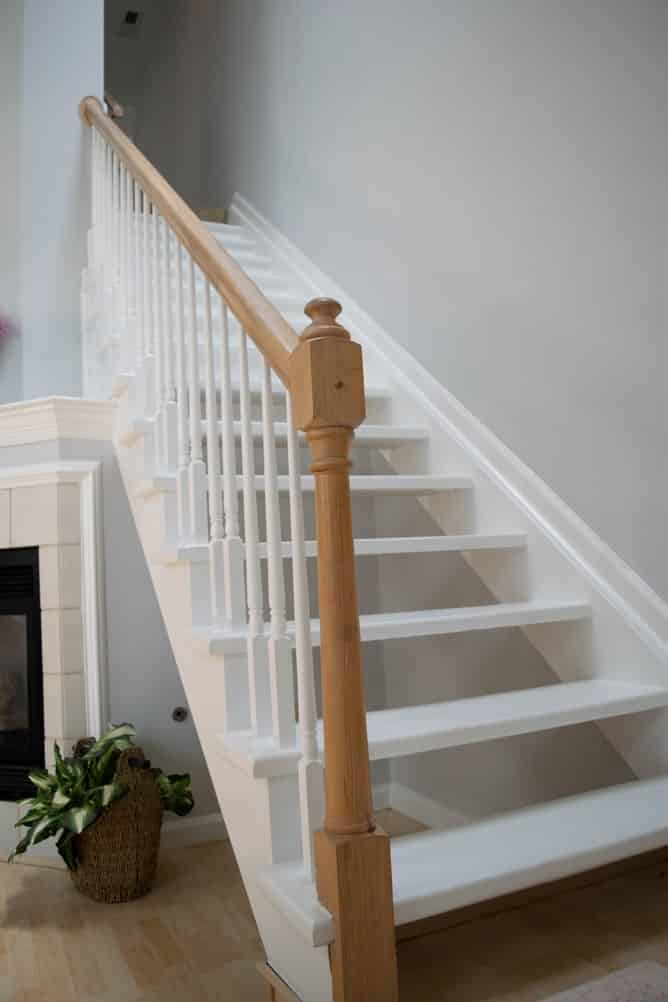
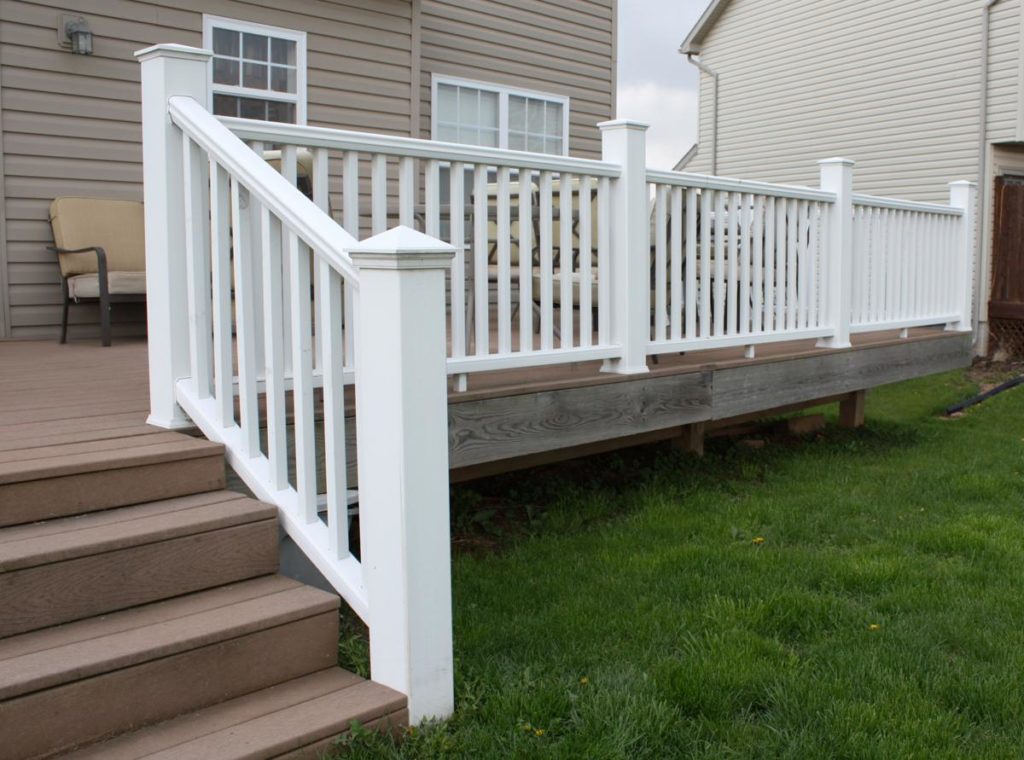
Vinyl
Vinyl is among the most affordable, and it can come in a variety of colors to match your home’s exterior. It is reasonably maintenance-free, needing only an occasional cleaning to remove any debris or dirt, so it will cost you very little over its lifetime.
The downside to vinyl, along with its limitations related to its overall strength, is its durability. Although vinyl’s color technology has improved over time, it is still prone to fading, particularly when placed outside. Additionally, vinyl is not ideal for extreme hot or cold climates, where it can warp or crack, which will require it to be replaced.
Steel
When it comes to strength and durability, steel is, hands-down, the winner. However, steel, particularly stainless steel, is the most expensive railing material.
A steel railing system can consist entirely of steel components for the posts, top rail and pickets, or it can incorporate other materials like cable and glass. However, the weight of steel can make it difficult for the average DIYer to install themselves.
Finally, a steel railing, like stainless steel, is virtually maintenance-free and is more resistant to corrosion (when maintained properly). Homeowners worried about durability and longevity can consider options like 306L or 2205 stainless steel. They are rated for corrosive environments like near the ocean.
If you’re concerned about the look of a steel railing system, some steel can be painted. You’ll need to make sure the color you want is available in metal-compatible paints. Additionally, be prepared—particularly for outdoor railings—to repaint as needed.
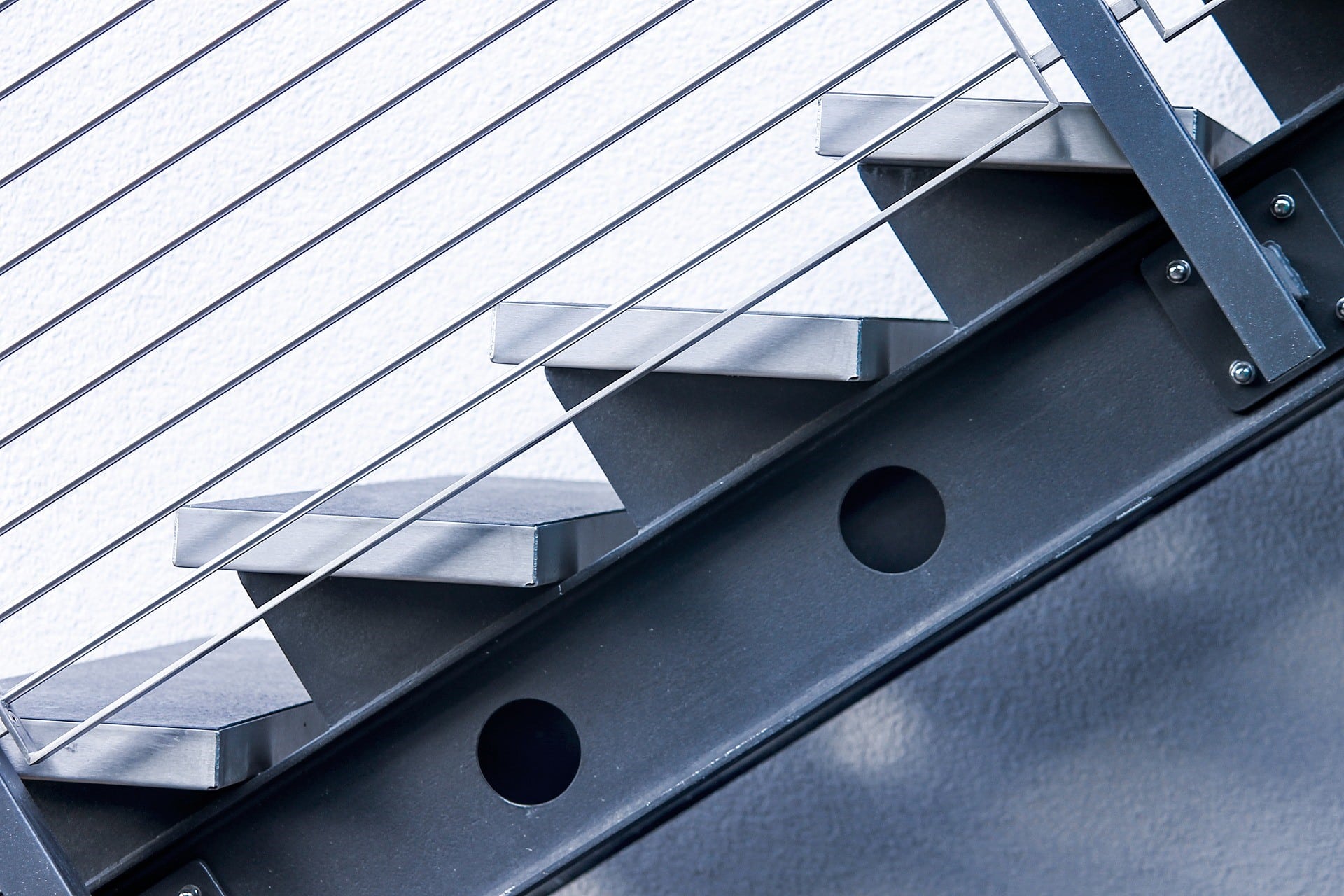
Aluminum
Aluminum makes a great alternative to steel. It’s better suited for a savvy DIYer as its lighter weight makes it easier to move around and install compared to steel. Additionally, aluminum railings also tend to be less expensive than steel, while sacrificing very little in strength and durability.
Many suppliers of aluminum railings offer a variety of color finishes. Before the railing is finished in the color of your choice, it is pre-treated to help improve aluminum’s overall corrosion resistance. The treatment along with the color options make them a flexible option to fit with any design aesthetics.
Finally, once they’re installed, aluminum railings are virtually maintenance-free, and have a greater lifetime value over wood and vinyl.
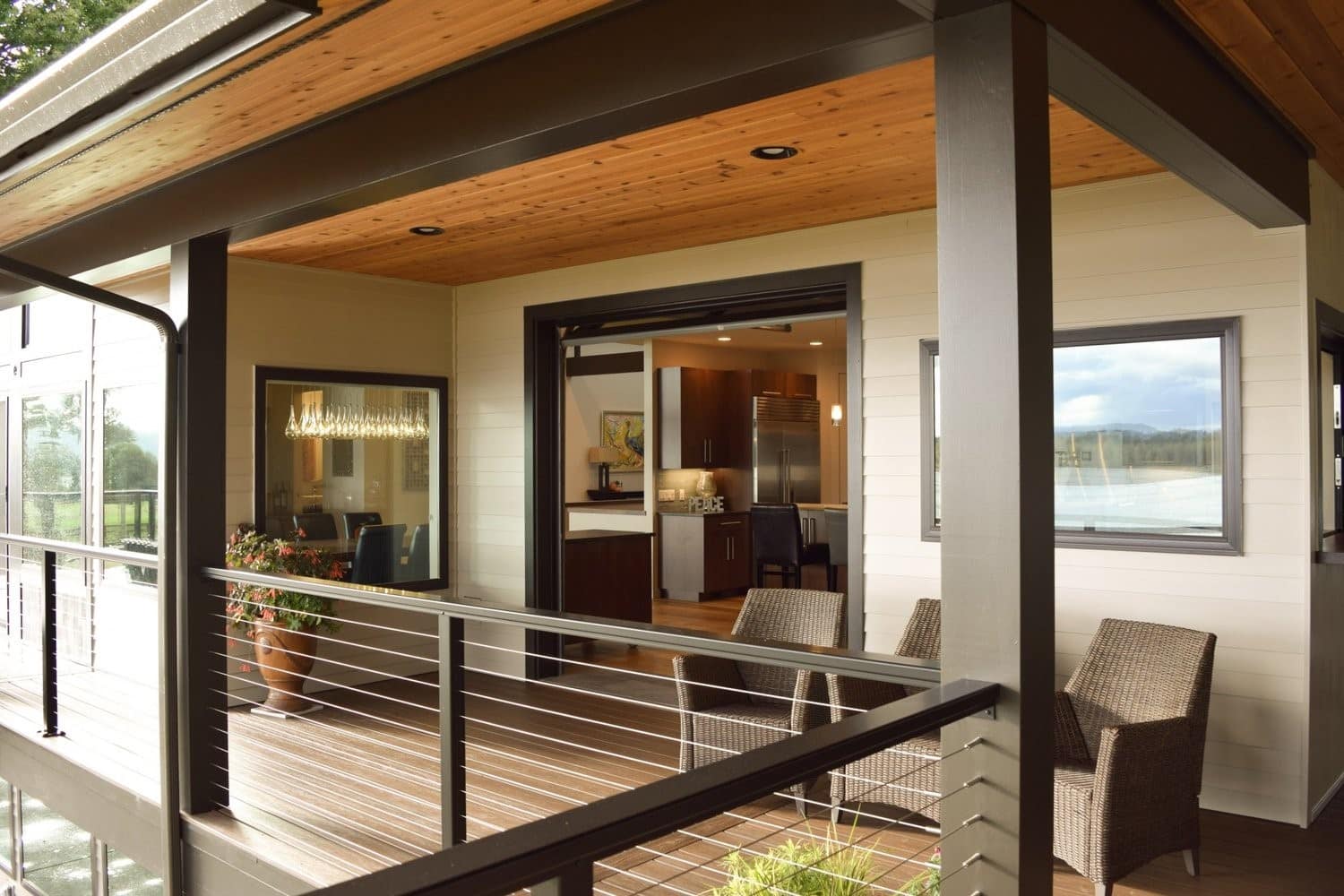
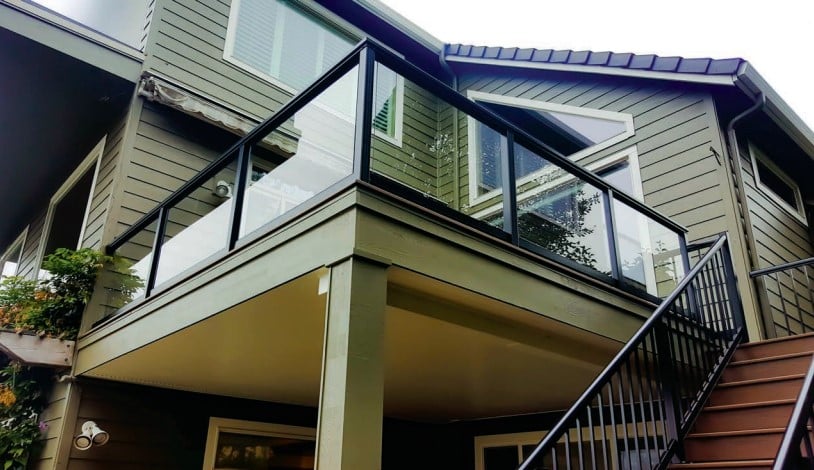
Glass
From a maintenance perspective, glass inserts are relatively low-maintenance. For exterior railings, you can clean them as often as you clean your exterior windows. However, they are known to weather and become cloudy over time. For interior applications, clean them as needed—like when you notice fingerprints after guests come for a visit.
Glass can be heavy and if not handled properly, can crack during installation. Therefore, we suggest you hire a professional to manage the installation.
Cable
Cable railing systems are becoming increasingly popular. Most often made from stainless steel, these high-tension cables balance the need for safety while creating limited visual distraction. They’re well suited for both indoor and outdoor uses.
Cable railing systems work with nearly any type of post material, including aluminum, steel, composite sleeves and wood.
Material options like 316-grade stainless steel make cable railing corrosion-resistant and well-suited to seaside environments. 316-grade stainless steel contains chromium, nickel and 2-3% molybdenum, with the molybdenum included to resist pitting and corrosion by most chemicals, as well as resist saltwater corrosion.
Additionally, like other metal railing options, cables only need an occasional cleaning to look good.
Compared to other railing components, cable is relatively lightweight and the hardware is fairly easy to use. However, the key to a code-compliant cable railing system is achieving the necessary tension; you may want to bring in a professional to install it.
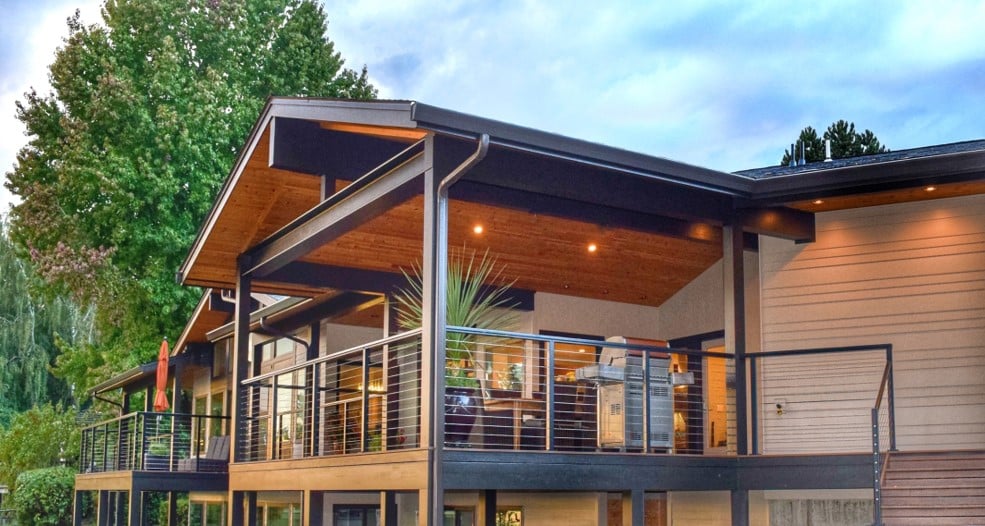
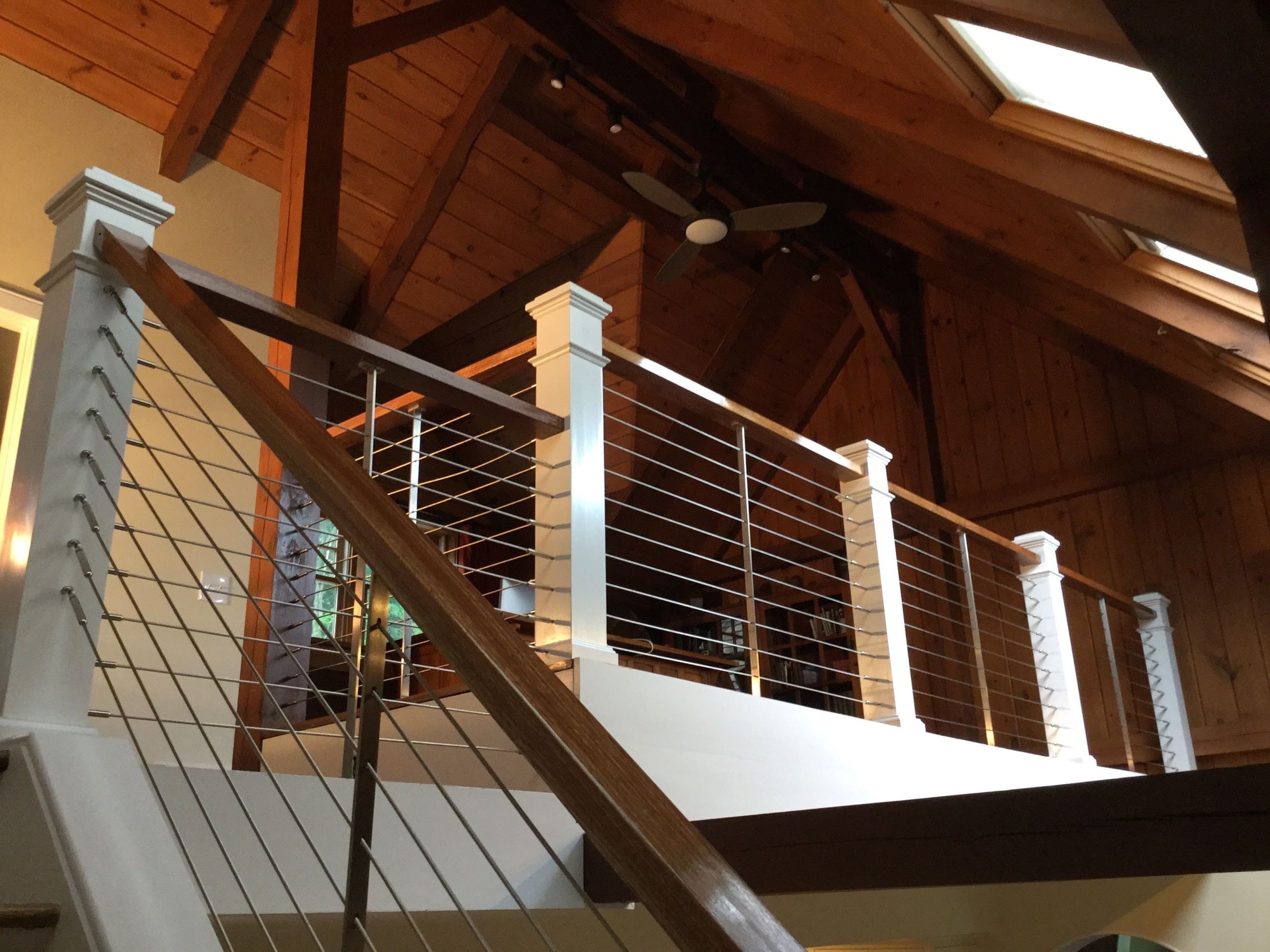
Railing System Styles: Which Is Right for You?
To make the right decision when choosing a new railing system, here are some ways to compare different factors.
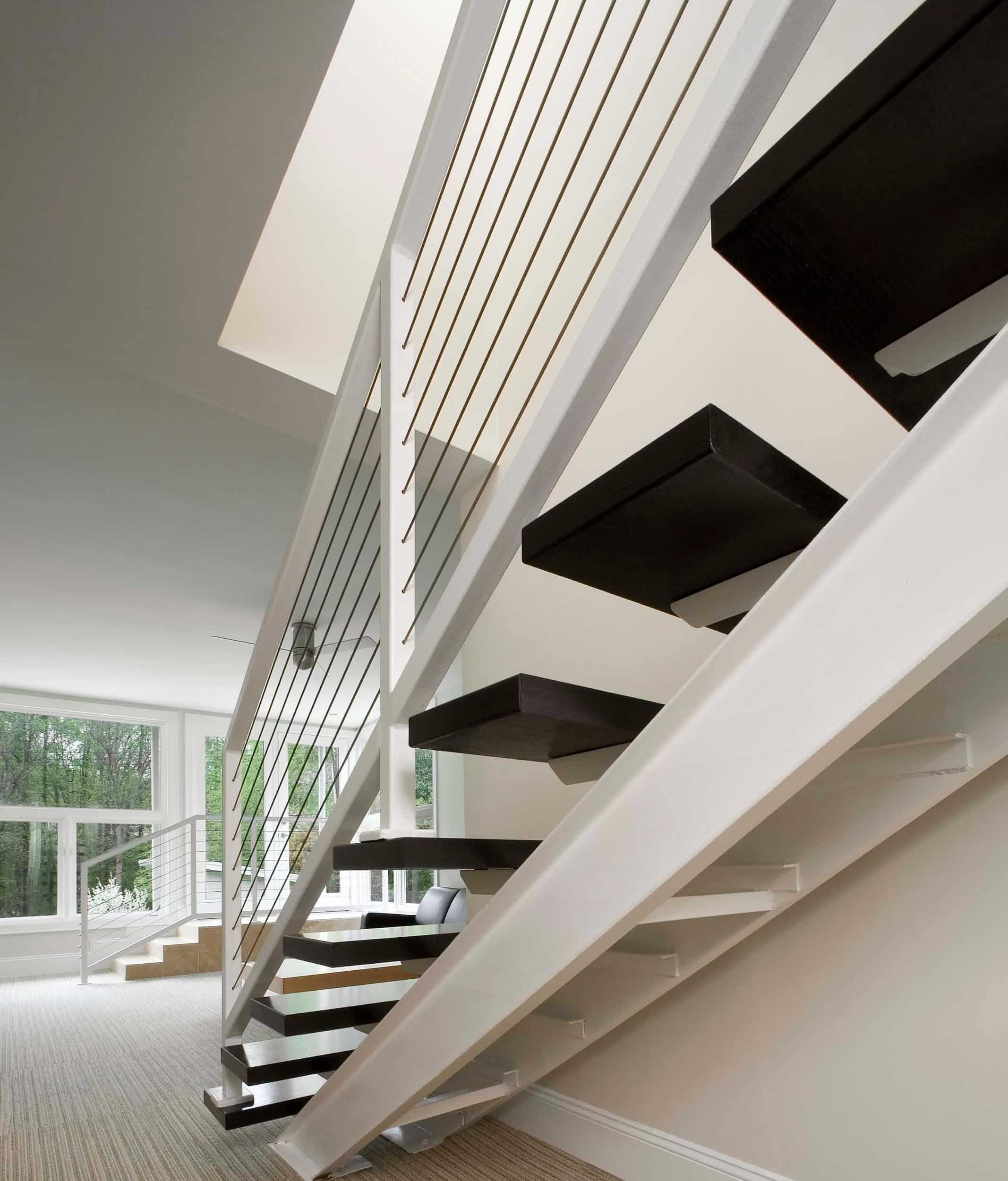
Price
|
Material |
Installation Costs |
Maintenance Costs |
|
Wood |
$ |
$$ |
|
Vinyl |
$ |
$ |
|
Steel |
$$ |
$ |
|
Aluminum |
$ |
$ |
|
Wood (with glass) |
$ |
$$ |
|
Vinyl (with glass) |
$ |
$ |
|
Steel (with glass) |
$$ |
$ |
|
Aluminum (with glass) |
$ |
$ |
|
Wood (with cable) |
$ |
$$ |
|
Steel (with cable) |
$$ |
$ |
|
Aluminum (with cable) |
$ |
$ |
View
|
Material |
View |
|
Wood (pickets) |
Limited view |
|
Vinyl (pickets) |
Limited view |
|
Steel (pickets) |
Limited view |
|
Aluminum (pickets) |
Limited view |
|
Wood (with glass) |
Uninterrupted view |
|
Vinyl (with glass) |
Uninterrupted view |
|
Steel (with glass) |
Uninterrupted view |
|
Aluminum (with glass) |
Uninterrupted view |
|
Wood (with cable) |
Uninterrupted view |
|
Steel (with cable) |
Uninterrupted view |
|
Aluminum (with cable) |
Uninterrupted view |
Durability
(1 – somewhat durable to 3 – very durable)
|
Material |
Durability |
|
Wood |
2 (with regular maintenance to prevent rot) |
|
Vinyl |
1 |
|
Steel |
3 |
|
Aluminum |
3 |
Ease of Installation
|
Material |
Ease of Installation |
|
Wood |
DIY |
|
Vinyl |
DIY |
|
Steel |
Professional |
|
Aluminum |
DIY/Professional |
|
Wood (with glass) |
Professional |
|
Vinyl (with glass) |
Professional |
|
Steel (with glass) |
Professional |
|
Aluminum (with glass) |
Professional |
|
Wood (with cable) |
DIY/Professional |
|
Steel (with cable) |
DIY/Professional |
|
Aluminum (with cable) |
DIY/Professional |
Ready to Choose Your Railing System Styles?
A railing is a critical component of your home’s design and safety. Not only does it serve a functional purpose, the railings need to complement your home’s design, look and feel.
For more information on choosing the right indoor or outdoor railing system for your home, visit us.
